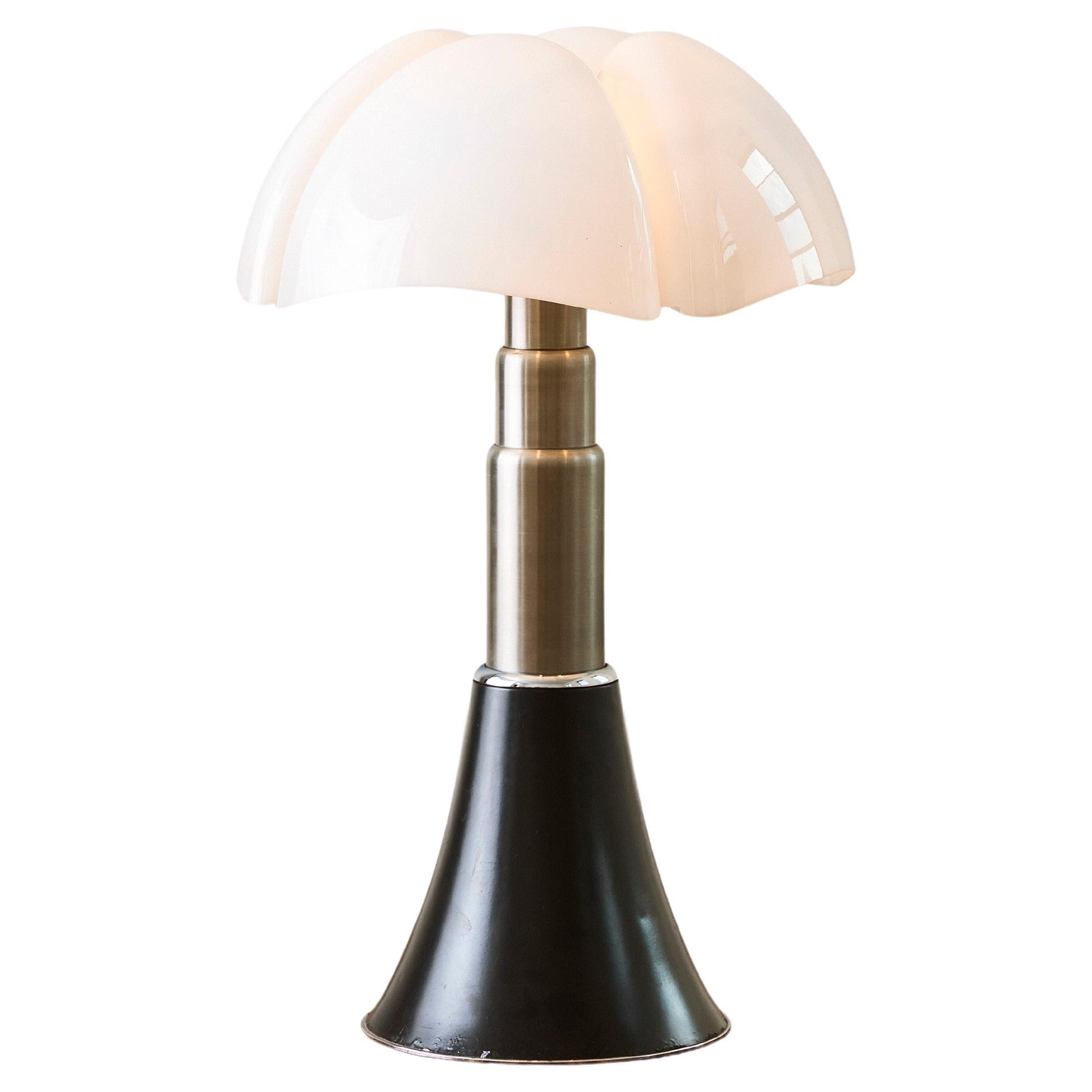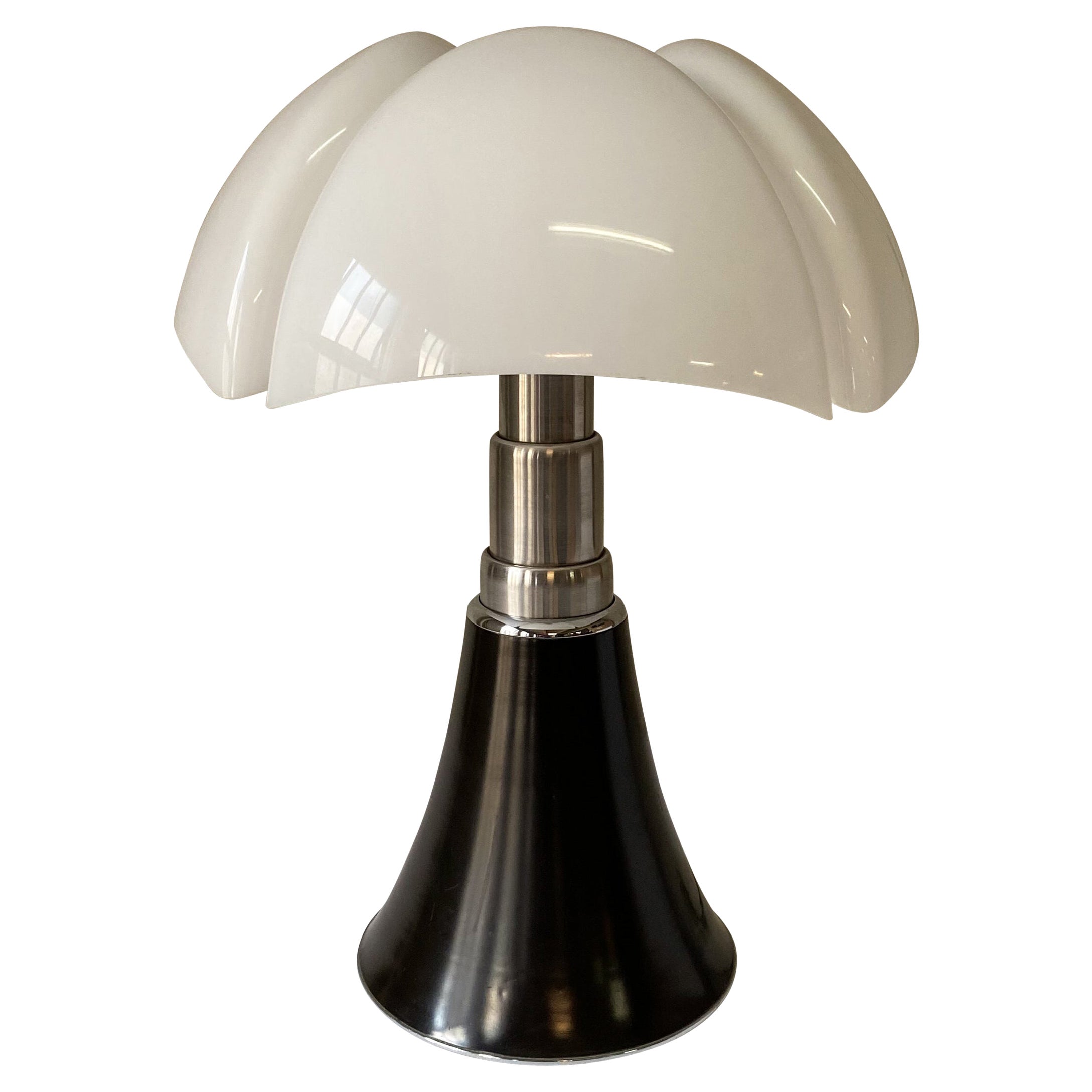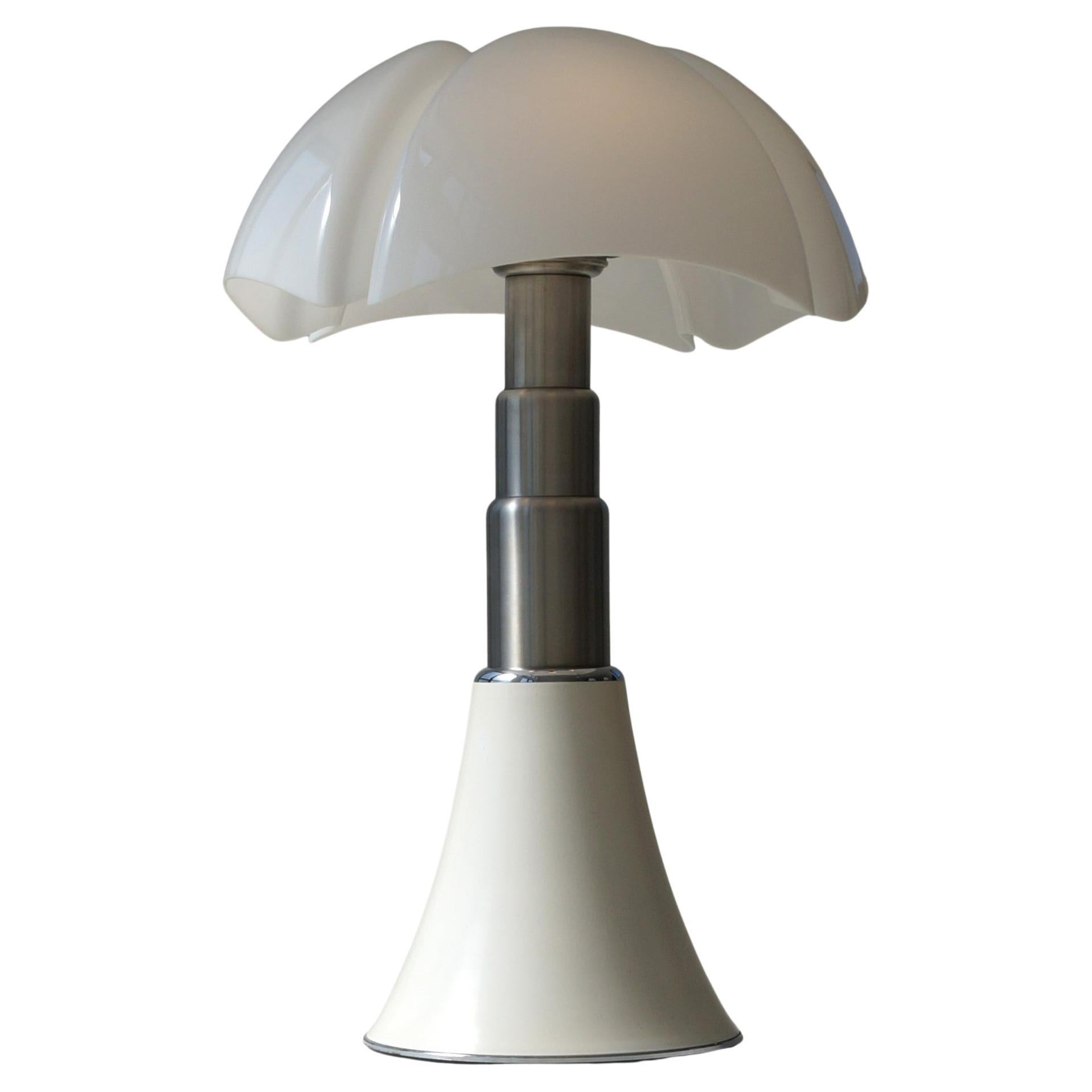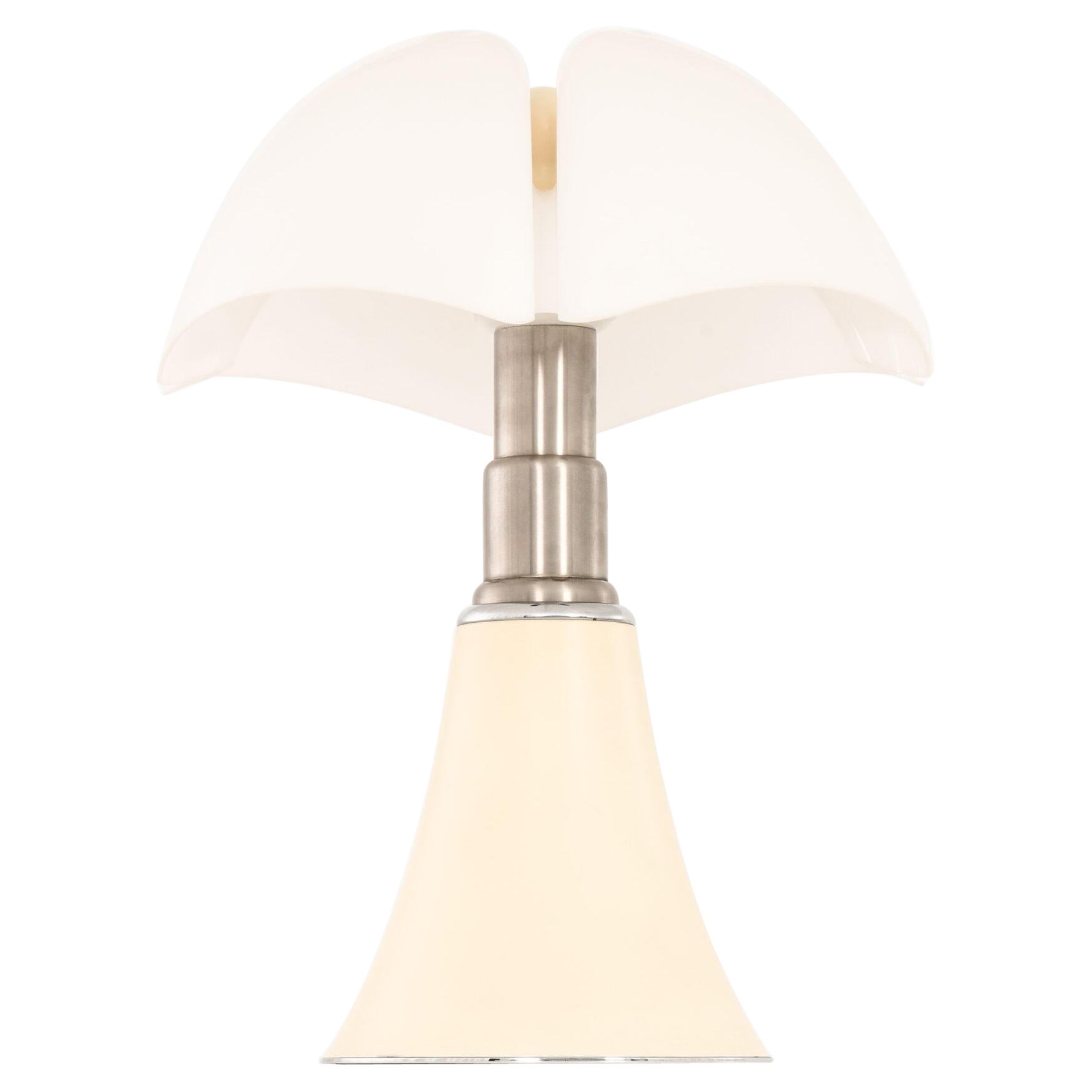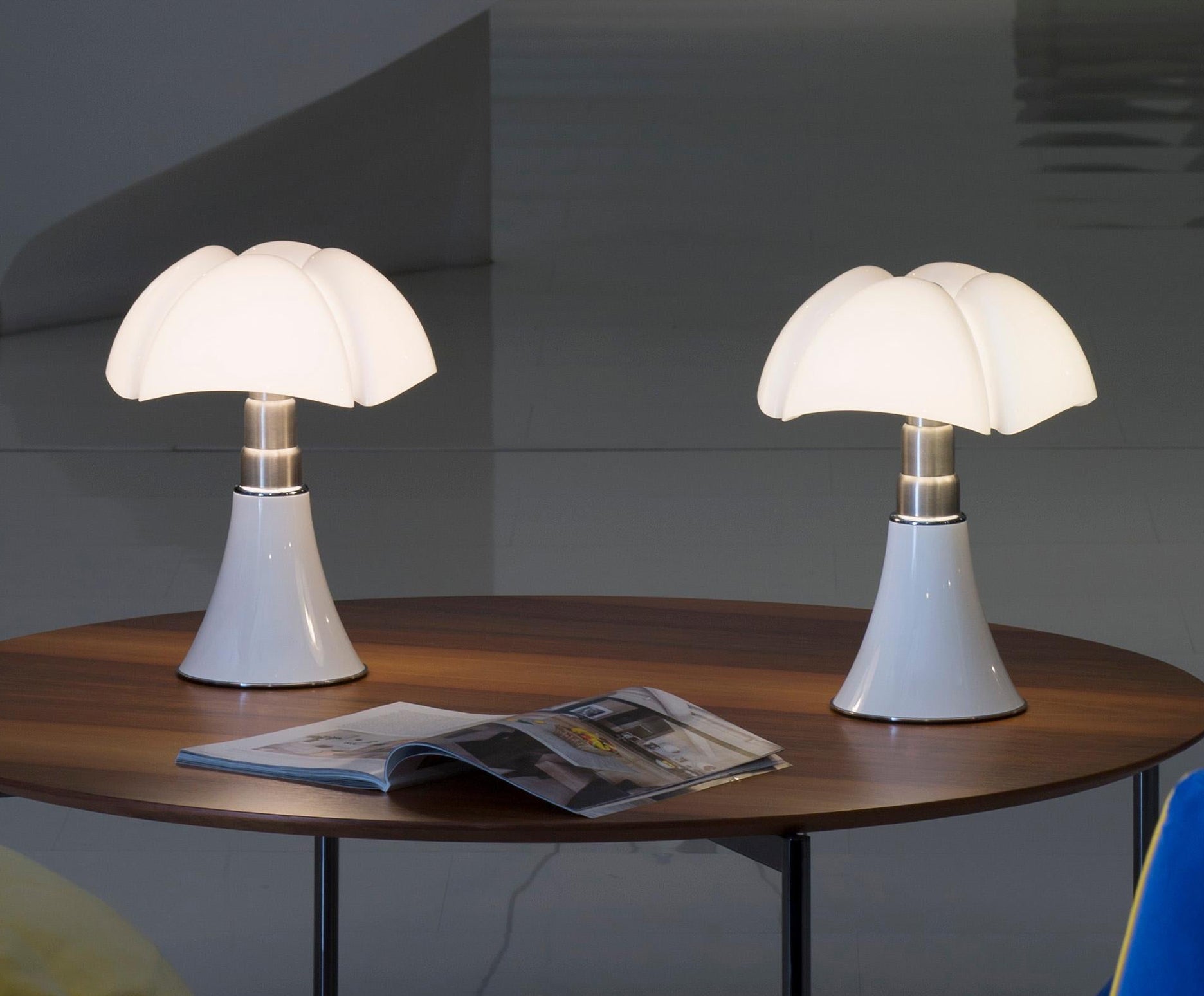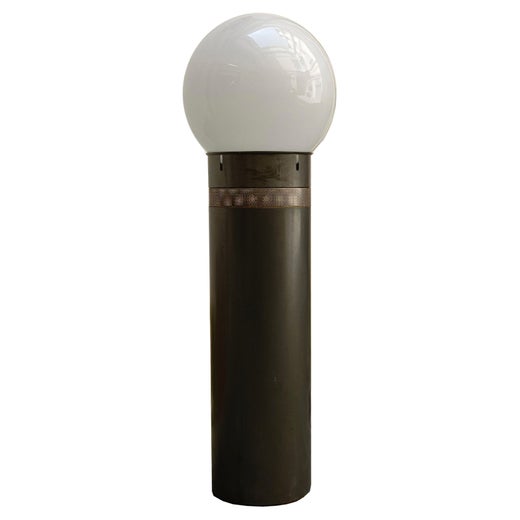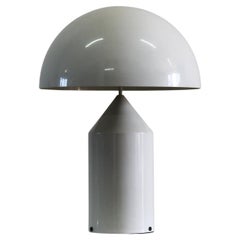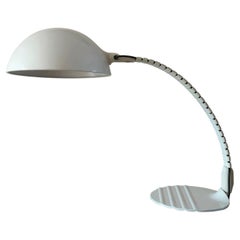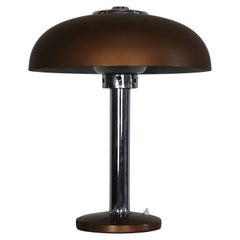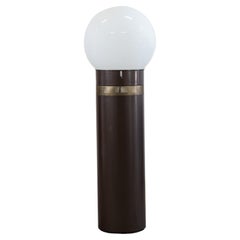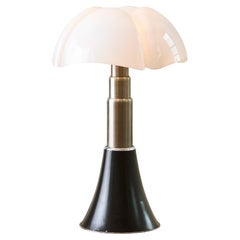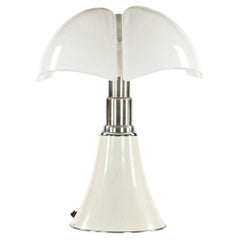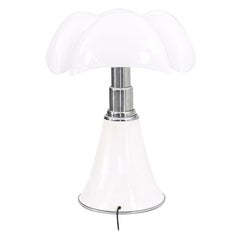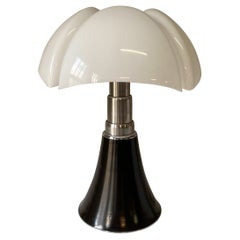Gae Aulenti White Pipistrello Table or Floor Lamp by Martinelli Luce 1965
About the Item
- Creator:Gae Aulenti (Designer),Martinelli Luce (Manufacturer)
- Design:
- Dimensions:Height: 27.56 in (70 cm)Diameter: 21.66 in (55 cm)
- Power Source:Plug-in
- Lampshade:Included
- Style:Mid-Century Modern (Of the Period)
- Materials and Techniques:
- Place of Origin:
- Period:
- Date of Manufacture:1965
- Condition:Wear consistent with age and use.
- Seller Location:Montecatini Terme, IT
- Reference Number:1stDibs: LU5304242175842
Pipistrello Lamp
Like the animal for which it is named, Gae Aulenti’s 1965 Pipistrello, which means “bat” in Italian, is a lamp that’s both graceful and skeletal. With its translucent shade and telescopic stem, the Pipistrello merges art and engineering. Designing her iconic lamp wasn’t Aulenti’s only project at the time; she was also teaching at the School of Architecture at the Polytechnic University of Milan and running her architecture practice, which she founded in 1954.
In addition to architecture, Aulenti (1927–2012) was also interested in interior design, especially so when she joined the staff of design magazine Casabella in 1955. She would later go on to join the American Society of Interior Designers. The Pipistrello is a testament to both Aulenti’s architectural training as well as her foray into interior decoration. Its telescopically adjustable steel stem, set atop a lacquered aluminum base, renders it a practical and versatile table lamp. The acrylic shade, meanwhile, is sculptural and dynamic, with its overlapping arches suggesting mid-flight movement. Aulenti’s choice of material — white opal methacrylate, a translucent acrylic — makes for an enchanting glow when the light is on and hides the lamp’s inner workings when it’s off.
Despite her lasting legacy, Aulenti championed an understated approach to interiors and architecture, espousing the belief that a room’s human occupants should be the focus rather than any design piece. In an interview with Vogue, she said that her "advice to whoever asks me how to make a home is to not have anything, just a few shelves for books, some pillows to sit on.”
Aulenti’s second bit of advice, though, is an embodiment of her legacy and commitment to lasting design: “To take a stand against the ephemeral, against passing trends . . . and to return to lasting values." Light, function and durability — what could be more lasting than those?
The Pipistrello was manufactured by Milanese design house Martinelli Luce, which would become famous for the Cobra desk lamp a few years later, and it remains in production today.
Gae Aulenti
The Italian architect and designer Gae Aulenti will forever be best remembered for her work with museums, in particular her 1980–86 renovation of a Beaux Arts Paris train station to create the galleries of the Musée d’Orsay. Aulenti — whose first name, short for Gaetana, is pronounced “guy” — should also be recalled for her tough intellectual spirit and for working steadily when few women found successful architectural careers in postwar Italy.
After she graduated from the Milan Polytechic in 1954, Aulenti opened an architectural office. She also joined the staff of the progressive architectural magazine Casabella, whose editorial line was that the establishment, orthodox modernism of Le Corbusier and the Bauhaus, had outlived it usefulness. When their movement for fresh approaches to architecture and design received a sympathetic hearing, Aulenti found patrons — most prominently Gianni Agnelli, of Fiat, who later employed her to renovate the Palazzo Grassi in Venice for use as an arts exhibition space.
Commissions for showrooms and other corporate spaces brought Aulenti to furniture design. She felt that furniture should never dominate a room. Her chairs and sofas — low-slung, with rounded enameled metal frames and ample seats — and tables, particularly her 1972 marble Jumbo coffee table for Knoll, project solidity and sturdiness. In lighting design, however, Aulenti is bravura.
Each work has a marvelous sculptural presence. Pieces such as her Pipistrello table lamp and Quadrifoglio pendant are a perfect marriage of organically shaped glass and high-tech fixtures. Others have a futuristic elegance — and some even have a touch of personality. Aulenti’s Pileino and La Ruspa table lamps each look almost like little robots. Her lighting pieces are an artful grace note in the career of a woman who believed in strength.
Find vintage Gae Aulenti armchairs, coffee tables and other furniture on 1stDibs.
- ShippingRetrieving quote...Shipping from: Borgo a Buggiano, Italy
- Return Policy
More From This Seller
View AllVintage 1970s Italian Mid-Century Modern Table Lamps
Metal
Vintage 1970s Italian Mid-Century Modern Table Lamps
Metal
Vintage 1940s Italian Mid-Century Modern Table Lamps
Aluminum, Brass, Iron
Vintage 1970s Italian Mid-Century Modern Floor Lamps
Metal
Vintage 1960s Italian Mid-Century Modern Table Lamps
Aluminum, Brass, Steel
Late 20th Century Italian Mid-Century Modern Table Lamps
Metal
You May Also Like
20th Century Italian Mid-Century Modern Table Lamps
Aluminum, Stainless Steel
Vintage 1970s Italian Modern Table Lamps
Aluminum
Vintage 1970s Italian Modern Table Lamps
Opal, Aluminum
Vintage 1960s Italian Mid-Century Modern Table Lamps
Aluminum, Chrome, Stainless Steel
Vintage 1980s Italian Mid-Century Modern Table Lamps
Stainless Steel
Vintage 1960s Italian Mid-Century Modern Table Lamps
Metal
